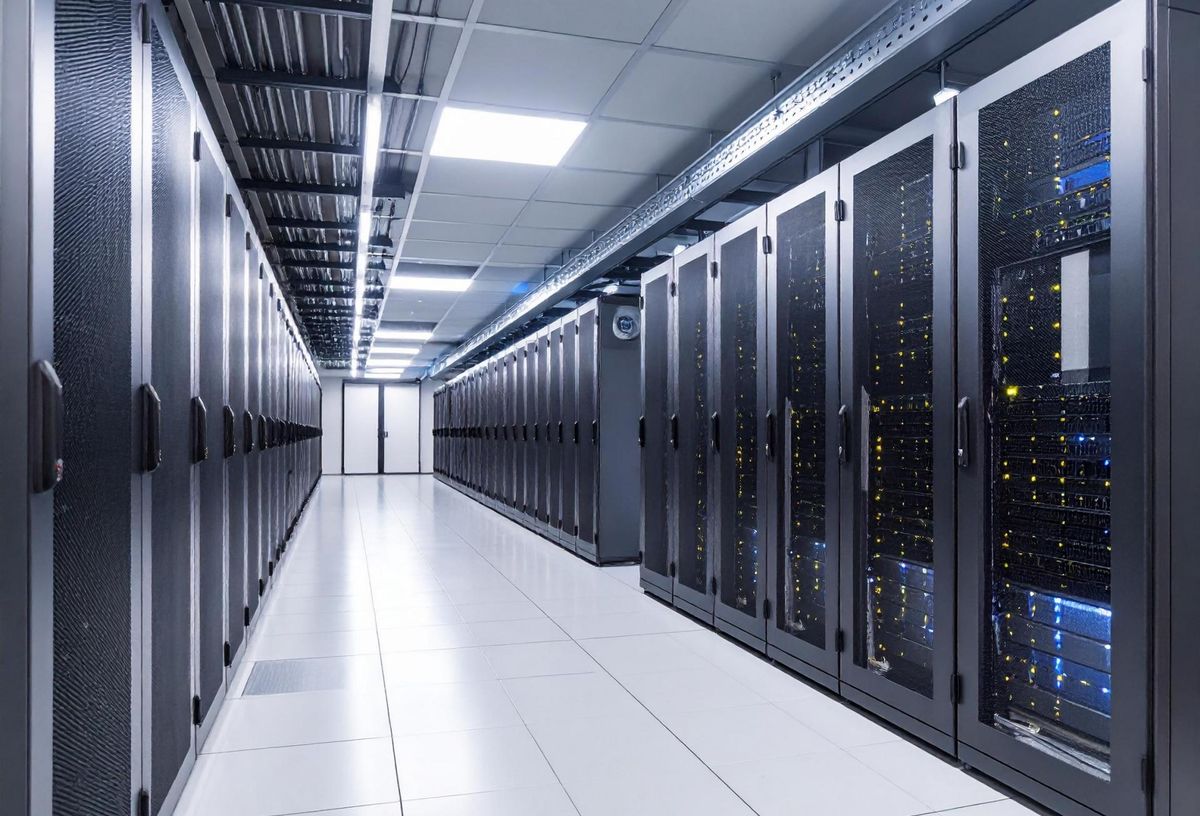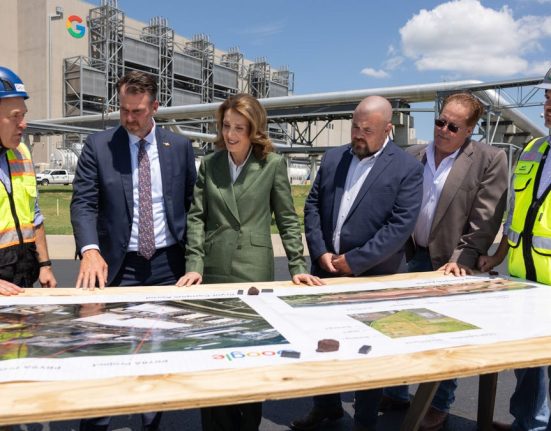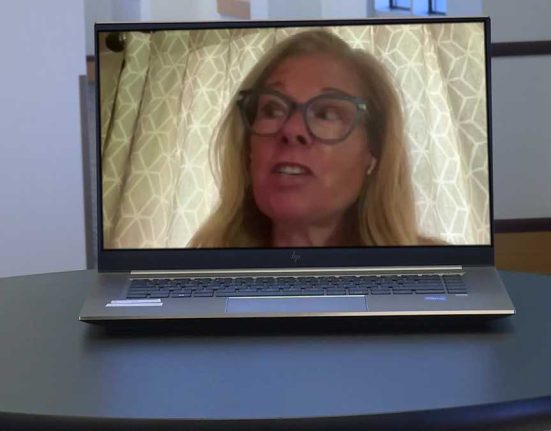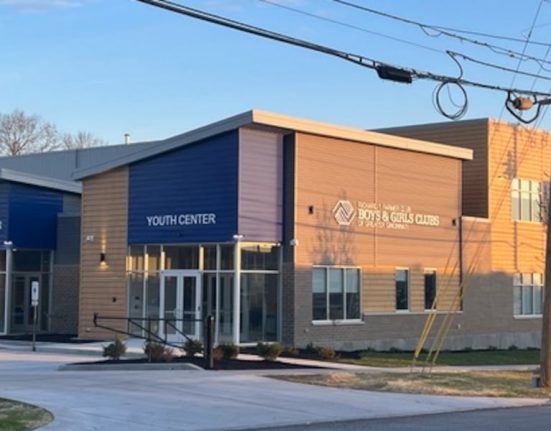The One Big Beautiful Bill Act that Congress passed earlier this month made anxiously anticipated changes to federal provisions with big implications for commercial real estate, and investors are gearing up for what the new regulations mean for the fastest-growing segment of the industry.
New rules around opportunity zones and bonus depreciation could be used to focus development in certain rural areas that have seen an uptick in data center development — and also attract additional sources of capital to the already exploding sector.
“Bonus depreciation has huge potential benefits for high net worth individuals to invest in data centers,” H5 Data Centers Chief Operating Officer David Dunn said. “Every family office in the United States should have this on their radar.”

Bisnow/created with assistance from Adobe Firefly
Data centers and data center real estate attracted more than $30B in private construction funding last year alone, according to Newmark. Although some major players in the tech and investment spaces have expressed skepticism lately about the extraordinary boom of data centers, the industry is set to keep growing, now aided by the One Big Beautiful Bill Act.
Bonus depreciation, which allows investors to deduct the full value of equipment improvements or purchases upfront, instead of throughout the lifetime of the investment, was extended indefinitely, a tax change that is especially lucrative for equipment-heavy data center investments.
The nonprofit Tax Foundation predicted one version of this alteration would cost the U.S. government $243B in revenue through 2029, funds it believes will free up capital to reinvest in domestic growth.
The tax benefit is usually mentioned in the context of manufacturing or service-based businesses that rely on equipment, but it can also be applied to data centers, which tend to be more hands-off, as investments go.
Since the legislation makes bonus depreciation retroactive to Jan. 20, anybody who sold a business after that date could reinvest that money, buy an existing data center and depreciate roughly 55% of the purchase price, Dunn said.
“Data centers are pretty much unlimited right now, in terms of how much money you can invest,” Dunn said. “It’s hard to scale a bunch of car washes and laundromats, other industries that benefit from this kind of depreciation.”
In addition to the bonus depreciation change, there are also shifts in the opportunity zones program that might make it more favorable to this sector. The incentives were created in 2017 to steer investment into economically underserved areas in exchange for breaks on capital gains taxes and can be used for any property type.
The new language for a new generation of OZs increases the potency of that incentive for rural investment. Qualified rural investments would get a 30% basis step-up instead of 10% basis step-up, which can further reduce capital gains tax. The rush to build new data centers in mostly rural areas might induce further spending.
“That’s one of the important things about the OZ incentive model: It’s sector-agnostic and can evolve with different needs and opportunities in the real economy over time,” said John Lettieri, co-founder and CEO of the Economic Innovation Group, a think tank that has long promoted and advocated for the OZ program.

President Donald Trump delivers remarks before the signing of the One Big Beautiful Bill Act on the Fourth of July.
Data center developers and land buyers are primarily focused on energy issues, including transmission capacity. And much of the investment comes from institutional investors, who tend not to care as much about tax incentives.
But Dunn and others believe there is more potential this time around, in part due to rising demand for data center capacity. Writers at The New Localism argued that opportunity zones could play a “critical role” in updating and modernizing energy infrastructure in rural areas.
Investing to improve land with a data center would meet the qualifications for OZ investments. And since governors are going to be drawing an entirely new opportunity zone map in 2026 — subject to approval by the secretary of the treasury — which will be open for investment in 2027, areas can be included that would be in the direct path of expected data center expansion.
The House of Representatives specifically called out the utility of data center investment in one of the early drafts of its version of the One Big Beautiful Bill Act, noting it is well within the eligibility criteria for how the zones are chosen.
“Someone should be writing algorithms to look at where there is access to energy and very low income, which qualify for opportunity zones,” Realm founder and CEO Travis King said. “I would argue that’s underway already, in the sense that the areas where you can still get energy are pretty well defined.”
Investors also could buy into data center leases, which means all the investment in the asset would go toward equipment and not land, which isn’t depreciable, Dunn said.
There isn’t a substantial track record for data center developments using the initial OZ incentives, in part due to the lower profile of the data center industry when the program was introduced in 2017.
According to data from the Joint Committee on Taxation, roughly 9% of OZ investment through the end of 2022 was categorized in the information sector, which would include data centers. It was the second-largest category, after real estate, totaling $7.4B. Some of the early data center OZ investment didn’t pan out.
One OZ data center in Maine, seeking to repurpose an old paper mill in a rural part of the state, didn’t work out because developers failed to secure an adequate and steady power supply. The institutional investors that make up a bulk of data center investment also typically aren’t as concerned with tax incentives.
But with changes in demand for data centers, many advocates expect more use of the program for data centers going forward.
“I do think you’ll see a lot of that kind of use case, which is obviously a huge need in our economy right now,” Lettieri said. “To win the future with AI, it’ll require a host of policies supporting that type of investment.”







